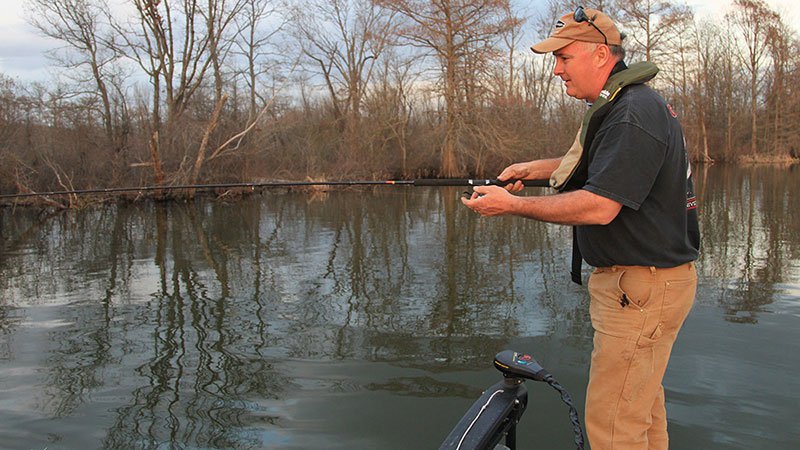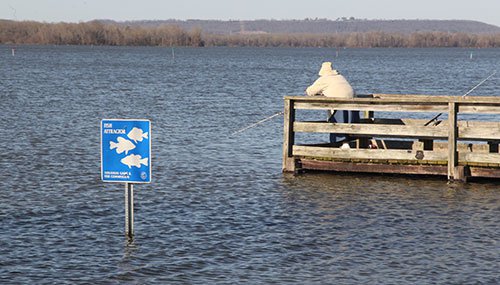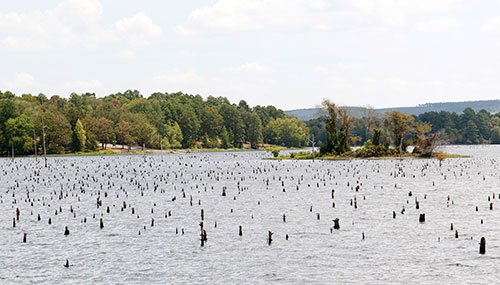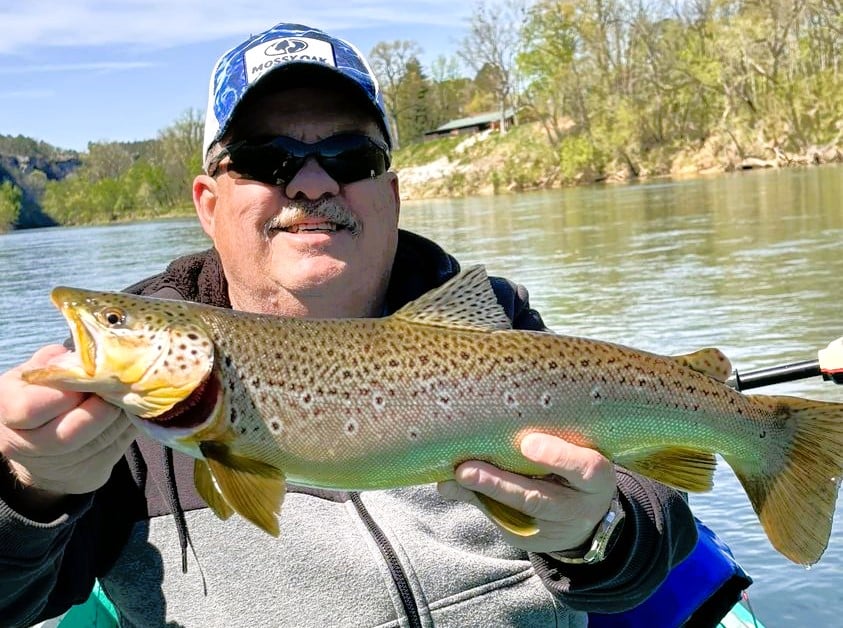Explore new fishing options during high water
BY Chuck Long
ON 04-15-2020

April 15, 2020
Chuck Long
AGFC Northeast Regional Educator, Jonesboro
JONESBORO — Another wet spring is upon us, and many anglers who rely on rivers, oxbows, backouts and bays have been met with high, muddy water that can create frustrating fishing conditions. But in a state with so many bodies of water, anglers still have some great opportunities to go fishing.

Some of the waters might be unfamiliar, intimidating or out of many anglers’ comfort zones, but many mid-sized and smaller lakes can be explored within a day or two and typically receive less fishing pressure than the larger Army Corps of Engineers impoundments and large rivers usually written about or highlighted by tournaments and social media feeds. The Arkansas Game and Fish Commission manages a host of excellent fisheries that have little inflow and are not impacted by heavy runoff. These lakes also offer a wide range of habitats that can suit any fisherman’s favorite method. Some lakes are basically lowland reservoirs while others have many features that resemble larger Corps impoundments. Lake Charles, Hogue, Overcup, Mallard, Harris Brake and many others have great reputations for fishing in the spring. Lower White Oak Lake between Camden and Gurdon has also seen a boom in activity thanks to a recent renovation project completed in 2014. Maps and descriptions of many of these lakes are available at www.agfc.com/en/fishing/where-fish/public-fishing-areas. Many of these locations also are highlighted in the AGFC’s Weekly Fishing Report with current fishing conditions and fishing patterns.
Small private bodies of water also dot the map and can also be a great way to get in a little fishing time while the water recedes. Most of these farm ponds are private, so permission is required. There also are several small ponds or lakes on AGFC wildlife management areas around the state, and careful study of maps can be the key to finding these hidden gems. Some of these small waters are named, while most are not. Areas like Petit Jean WMA, W.E. Brewer Scatter Creek WMA, Sylamore WMA, Henry Gray Hurricane Lake WMA and Scott Henderson Gulf Mountain WMA have some good places to wet a hook.

A change of species might also be an option to get a tug on the line. Bass, bream and crappie may be put off by high and muddy water but that rings the dinner bell for several species of catfish and other bottom feeders. Adapting to these species is fairly easy. The only tackle required is a hook, sinker and a few worms, crayfish or stinkbait to adorn the hook.
Different tactics, such as trotlines, limblines and yo-yos may also be an option. Flooded timber about 3 to 4 feet deep can be a great option for trotlines and limblines, so long as the current does not push too much debris into your setup. Baits of crawdads, nightcrawlers or minnows have caught many catfish in waters that look more suitable for duck hunting. Visit https://www.agfc.com/en/fishing/alternative-fishing-methods to find legal requirements for tagging this passive equipment.
It can be tough to watch rain almost every other day and see a favorite fishing hole high and muddy, but with a little thought, footwork and planning there are always some excellent alternatives.
Recent News

Arkansas Wildlife Weekly Fishing Report
Apr. 18, 2024
Subscribe to Our Weekly Newsletter E-mails
Don’t miss another issue. Sign up now to receive the AGFC Wildlife Weekly Newsletter in your mailbox every Wednesday afternoon (Waterfowl Reports are published weekly during waterfowl season and periodically outside the season). Fishing Reports arrive on Thursdays. Fill in the following fields and hit submit. Thanks, and welcome!

